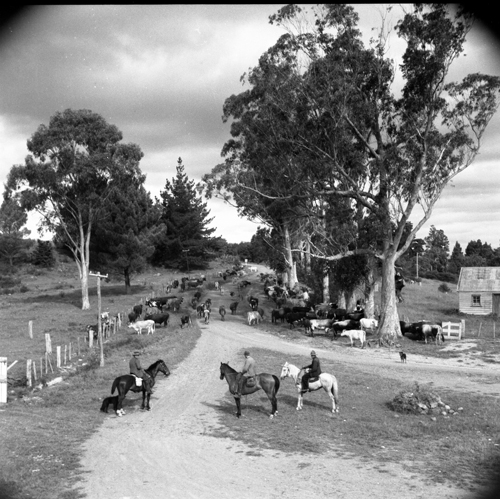 Taheke River.
Taheke River.
This river bank and the river itself, was a playground for many of us. The Taheke Hotel was built on higher ground, up to the right of this photo. In pre-European times this had been an important highway, because this was as far as travellers could go before reaching a waterfall, which is what the name Taheke refers to. This was a desirable disembarkation point however, because from this point it was a relatively easy traverse right across to Kerikeri on the eastern coast, the most direct route from the Hokianga to the Bay of Islands.
Before roads this became a small town, built as a staging post by Europeans, where travellers could change from boat to horse, carriage, or perhaps just foot, & vice versa. There was, apart from the hotel, shops and a school. William Satchel, author of The Greenstone Door, had a shop here. Once roads came through however, river traffic ceased to be so important and the town went into a population decline. Now there are no shops at all, and the school has, in more recent years, closed down. It was where I began my formal schooling.
In the late 40’s when this photo was taken, there were still Maori communities who lived in very inaccessible areas. These people relied on the horse and the river for getting around. In this case these 4 men have come to the hotel by waka, and are going home with a keg of beer.
The river was always a place of great power and mystery for me. The clear water, with fresh water mussels burrowed into the shingle, the silvery blunt-nosed mullet, the waitbait, the weeping willows trailing in beautiful parallel lines, the Maori wading along the banks groping for eels and throwing them up on the bank. There was a sense of history there. It is part of me.
